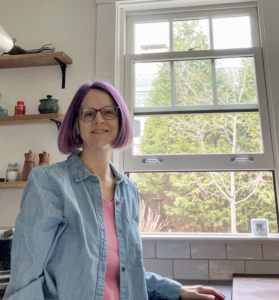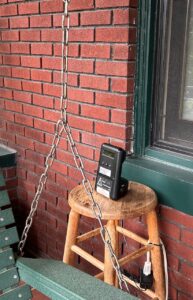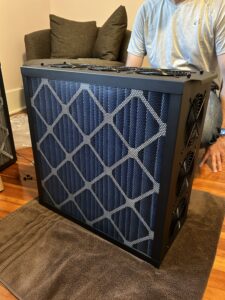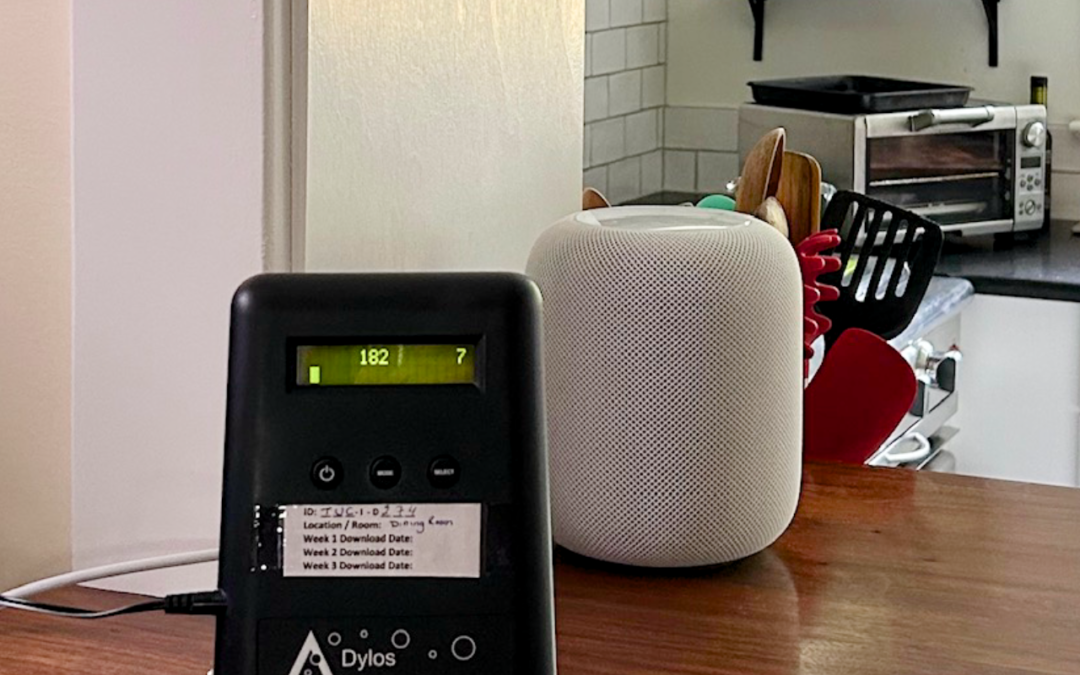Many air quality hazards aren’t easy to detect by sight or smell—so how do you know if you have a problem? Low-cost air quality monitors have made it easier than ever to learn the truth about our exposure to air pollution. But just having the monitors is only half the battle. You need to be able to interpret the data the monitors provide and figure out how to address any problems that are revealed.
That’s where the Low Cost Monitoring Project (LCMP) comes in. Five times a year, ROCIS offers monitoring cohorts to residents of Southwestern Pennsylvania (and the occasional participant from outside of the region). Participation is free. We loan LCMP participants a kit of seven low-cost air monitors measuring particles, carbon dioxide, carbon monoxide, and radon. Over the next four weeks, we meet with the cohort in a series of virtual meetings to talk through issues of air quality and help them gain meaningful insights from their data. Participants can experiment with interventions like portable air cleaners and induction stovetops to see what makes a difference in their home.
About the LCMPLCMP Participant Interview: Tracy Craig
 We spoke with one of our recent LCMP participants, Tracy Craig, about her experience in the LCMP. Tracy and her partner Jason already knew a fair amount about air quality, filters, and monitors before they joined the LCMP in August of 2024. “Although we had moved to Pittsburgh in 2019 with just a single portable air cleaner, a couple small temperature and humidity sensors, and a plan to get a radon monitor,” Tracy explained, “we became increasingly interested in understanding and improving our indoor air quality after the start of the pandemic.” They soon acquired even more sensors for measuring particles, carbon dioxide, and VOCs and upgraded their HVAC system with MERV 13 filters.
We spoke with one of our recent LCMP participants, Tracy Craig, about her experience in the LCMP. Tracy and her partner Jason already knew a fair amount about air quality, filters, and monitors before they joined the LCMP in August of 2024. “Although we had moved to Pittsburgh in 2019 with just a single portable air cleaner, a couple small temperature and humidity sensors, and a plan to get a radon monitor,” Tracy explained, “we became increasingly interested in understanding and improving our indoor air quality after the start of the pandemic.” They soon acquired even more sensors for measuring particles, carbon dioxide, and VOCs and upgraded their HVAC system with MERV 13 filters.
But in spite of their foreknowledge about air quality and all the monitoring they already had going on, Tracy and Jason had plenty to learn by participating in the LCMP, especially when it came to the relationship between indoor and outdoor air. To help highlight that relationship, we give LCMP participants Dylos particle monitors to place outside the home and in two locations inside.
 “Having the Dylos monitors both inside and outside during the LCMP allowed us to clearly see how outdoor air pollution impacted our indoor air quality,” Tracy said. “We now weigh outdoor air quality against our goals for indoor air quality, which influences how often and when we open windows and the schedules we set for some of our portable air cleaners.”
“Having the Dylos monitors both inside and outside during the LCMP allowed us to clearly see how outdoor air pollution impacted our indoor air quality,” Tracy said. “We now weigh outdoor air quality against our goals for indoor air quality, which influences how often and when we open windows and the schedules we set for some of our portable air cleaners.”
Participating in the LCMP also helped Tracy prioritize which elements of air quality were most important for her and Jason in their home. “Although we were initially concerned about radon when we moved to Pittsburgh, we learned that our existing radon mitigation system actually works quite well and we now focus more on particles and keeping those levels lower in the house.”
Most importantly, they found practical ways of reducing their exposure to pollution in their home. “During the LCMP,” Tracy said, “we kept one of the sensitive Dylos monitors near our kitchen/dining area and were able to see how effectively the fan worked to remove particles from the space.” Seeing that cooking activities were adding particles to the air, they began changing their habits. “We use the kitchen exhaust fan much more consistently now when cooking on our gas stovetop or when preheating the oven.”
Testing the impact of different interventions during their participation in the LCMP offered Tracy and Jason important information about how to keep making improvements to their air quality. “When we needed to replace one of our portable air cleaners recently,” Tracy said, “we opted for a more powerful model that would clean the air in a larger space.” The insights they gleaned from their monitoring data had shown them that a larger filter was a better choice than adding another smaller air cleaner to the space.

Tracy’s partner Jason assembles a powerful PC-fan air filter for use at Jason’s workplace.

Fully assembled air cleaner
Some improvements may yet be added to their home system when the time is right. As Tracy explained, “At some point we will need to replace one of our AC systems and plan to opt for a setup that allows for a larger filter (2+ inches) and has multiple fan speeds.”
But one of the benefits of more intensive monitoring for Tracy and Jason was reassurance that they were on the right track already. “The filtration and ventilation measures we had in place were working better than we knew,” Tracy said. She was pleased to see that they could improve their air quality even further with just a few small adjustments or changes.
What can you do to improve your air? Find outWe asked Tracy if she had any tips for other folks who might be concerned about their indoor air quality. “Trust your nose,” Tracy answered. “If you smell something ‘off’ or an odor that is particularly strong, it is probably worth investigating (and ventilating and filtering).” We love this advice. In some cases, you can be your own air monitor! Pay attention to your environment and the way that it is impacting you.
“Cooking matters,” Tracy added. “It can have a big impact on indoor air quality.” This is true. One of the best ways to mitigate the pollution generated by cooking is to use a vented range hood.
ROCIS recommendations on Kitchen Range Hoods
Tracy also suggested that you look into whole-house filtration. Homes with a central air handler may be able to retrofit their system for continuous filtration. Adding a more effective filter to your system and/or increasing runtime can significantly reduce small particle exposure indoors. Ask your HVAC contractor to use the ROCIS Air Handler Checklist to determine whether your system is a good candidate for this modification.
ROCIS Air Handler ChecklistTracy had one last piece of advice: “Sign up for an LCMP cohort!” We couldn’t agree more! There are two upcoming opportunities to do so this spring and summer. Sign up for the intro webinar to learn more about the LCMP. Webinar attendees will have the opportunity to join a monitoring cohort. Learn more at https://rocis.org/low-cost-monitoring-project/

